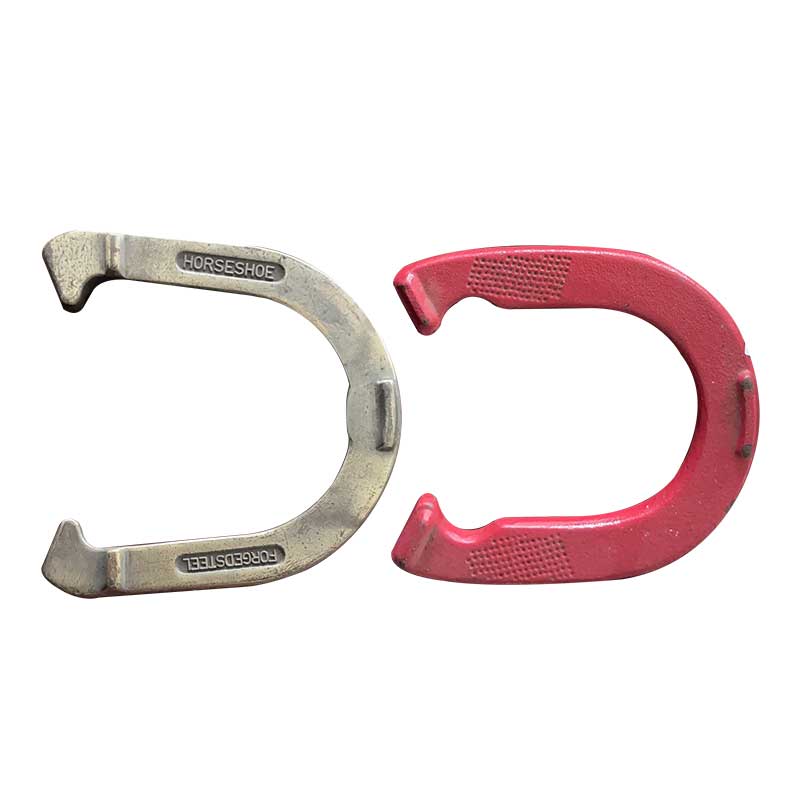Here's an overview of the forging technology involved in horseshoe production
2024-04-29
Forging technology for horseshoes involves the manufacturing process of shaping horseshoes from raw materials using heat and pressure. Here's an overview of the forging technology involved in horseshoe production:
1. Material Selection: The process begins with selecting the appropriate material for the horseshoe. Common materials include steel alloys such as mild steel, high-carbon steel, or aluminum. The choice of material depends on factors like the intended use, horse's hoof condition, and desired properties such as durability and weight.
2. Heating: The selected material is heated to a specific temperature in a forge. Heating softens the metal, making it more malleable and easier to shape. The temperature and heating duration depend on the type of material and the desired characteristics of the finished horseshoe.
3. Forging: Once the metal reaches the appropriate temperature, it is placed in a forging press or hammer. The forging process involves applying controlled pressure to shape the heated metal into the desired horseshoe form. Forging can be done using various techniques, including open-die forging, closed-die forging, or impression die forging, depending on the complexity of the horseshoe design.
4. Shaping: During forging, the metal is shaped into the basic outline of the horseshoe, including the curved toe, heel, and branches that wrap around the horse's hoof. Skilled blacksmiths may also incorporate features such as nail holes, traction grooves, and clips for secure attachment to the hoof.
5. Trimming and Finishing: After the forging process, the rough horseshoe is trimmed to remove excess material and achieve the final shape and dimensions. Trimming may be done manually using a hammer and anvil or using specialized cutting tools. The surface of the horseshoe is then smoothed and polished to remove any imperfections and improve its appearance.
6. Heat Treatment: Depending on the material and desired properties, the finished horseshoe may undergo heat treatment processes such as quenching and tempering to enhance its strength, hardness, and resistance to wear and corrosion. Heat treatment involves heating the horseshoe to a specific temperature and then cooling it rapidly or gradually to achieve the desired metallurgical properties.
7. Quality Control: Throughout the forging process, quality control measures are implemented to ensure that the horseshoes meet the required standards for dimensions, shape, strength, and durability. Visual inspections, dimensional measurements, and mechanical testing may be conducted to verify the quality of the finished products.
8. Customization: Modern forging technology allows for the production of horseshoes in a wide range of sizes, shapes, and styles to accommodate different horse breeds, disciplines, and performance requirements. Customization options may include variations in size, weight, thickness, and features such as traction devices or therapeutic properties.
Overall, forging technology plays a crucial role in the manufacturing of high-quality horseshoes that provide comfort, support, and protection for horses' hooves while withstanding the rigors of various equestrian activities. Advances in materials science and manufacturing processes continue to drive innovation in horseshoe design and production, resulting in improved performance and durability.



